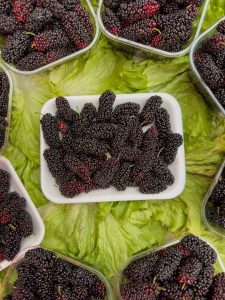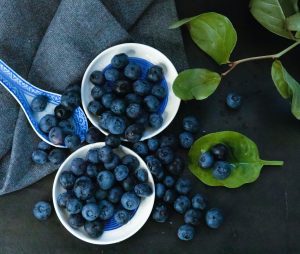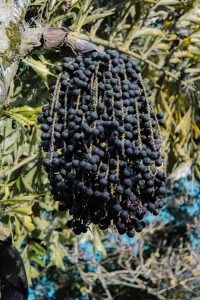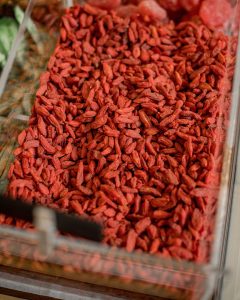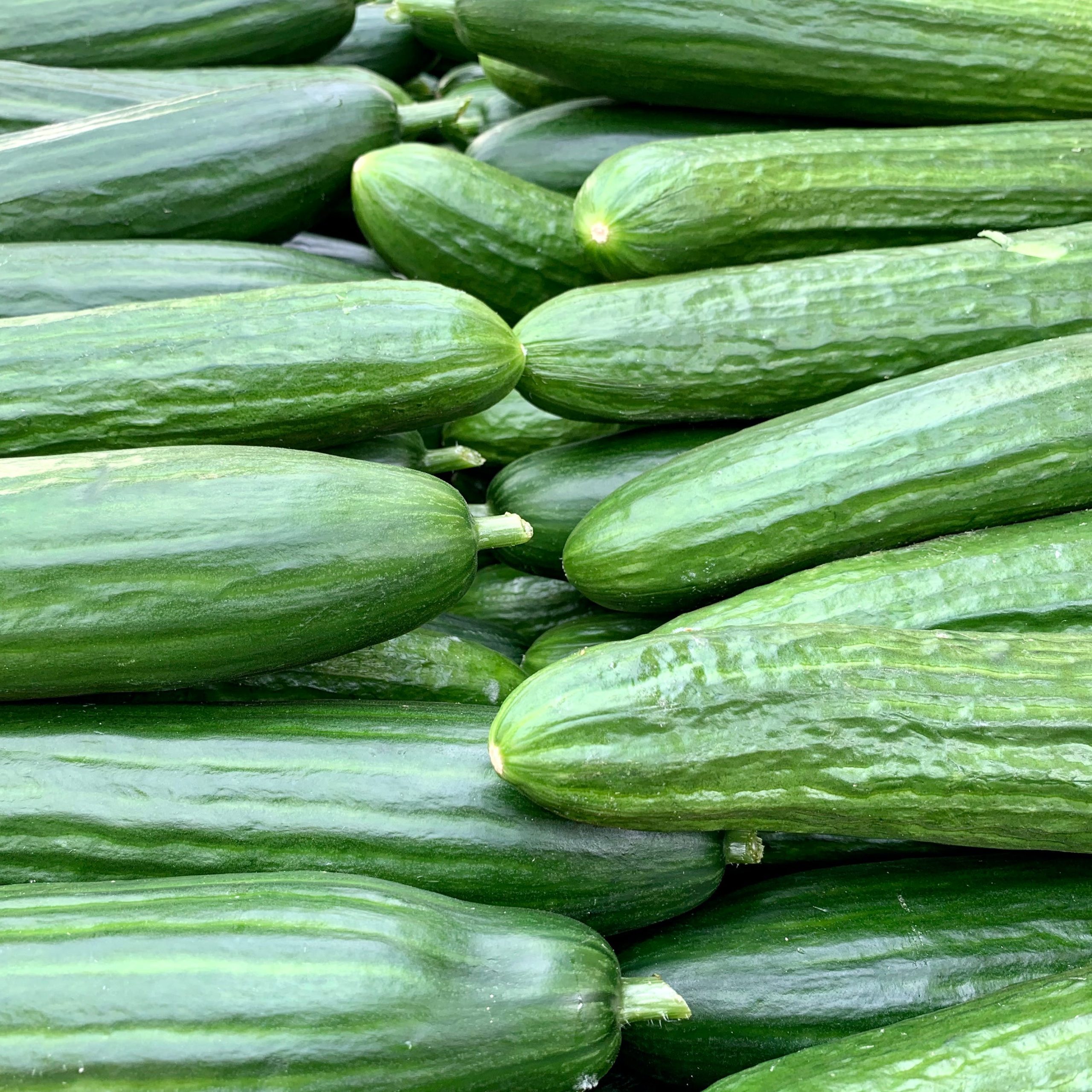
What Is a Cucumber?
Cucumber is a widely cultivated plant that produces long, green fruits, which are also called cucumbers. It belongs to the gourd family, Cucurbitaceae, and is scientifically known as Cucumis sativus. Cucumbers are commonly consumed as vegetables, and they are known for their mild flavor and high water content.
The cucumber plant is a creeping vine that produces cylindrical fruits that can vary in size, shape, and color. Typically, cucumbers have a thin, green skin, and the flesh is pale green and crisp. They are often eaten raw in salads, sandwiches, or as a refreshing snack. Cucumbers are low in calories and provide hydration due to their high water content.
Cucumbers are also used in various culinary applications, such as pickling to make pickles, and they are a versatile ingredient in many cuisines around the world. Additionally, cucumber slices are sometimes used in spa treatments for their cooling and soothing properties.
There are different varieties of cucumbers, including slicing cucumbers, pickling cucumbers, and seedless cucumbers, each suited for specific culinary purposes. Cucumbers are a nutritious addition to a balanced diet, providing vitamins, minerals, and antioxidants.
Why Do We Eat Cucumbers?
People eat cucumbers for several reasons, including their refreshing taste, versatility in culinary applications, and nutritional benefits. Here are some reasons why cucumbers are commonly consumed:
- Hydration:
- Cucumbers have a high water content (about 95%), making them a hydrating and refreshing food, especially during hot weather. Staying hydrated is essential for overall health, and consuming water-rich foods like cucumbers contributes to hydration.
- Low in Calories:
- Cucumbers are low in calories, making them a healthy and guilt-free snack or addition to meals. They are often included in weight-loss and healthy eating plans due to their low caloric density.
- Nutrient Content:
- While cucumbers are not extremely rich in vitamins and minerals, they do provide certain essential nutrients. They contain vitamins such as vitamin K, vitamin C, and various B vitamins. They also provide minerals like potassium.
- Digestive Health:
- Cucumbers contain fiber, particularly in their skin. Fiber is essential for maintaining a healthy digestive system and can help prevent constipation.
- Versatility in Cooking:
- Cucumbers are versatile and can be eaten in various ways. They can be sliced and added to salads, sandwiches, or wraps. Cucumbers are also used in pickling, and they can be blended into refreshing cold soups or smoothies.
- Cooling Effect:
- The high water content of cucumbers, along with their mild flavor, gives a cooling sensation when eaten. This makes them a popular choice in salads and dishes, especially during warmer seasons.
- Nutritional Support:
- While not a powerhouse of nutrients, cucumbers do contribute to overall nutritional intake. Including a variety of vegetables, including cucumbers, in your diet supports a well-rounded and balanced nutrition profile.
- Texture and Crunch:
- Cucumbers have a crisp and crunchy texture, adding a satisfying element to salads and other dishes. Their mild taste also makes them a versatile addition to various recipes.
In summary, people eat cucumbers not only for their refreshing taste and versatility but also for the nutritional benefits they offer. Whether consumed on their own or incorporated into meals, cucumbers contribute to a healthy and balanced diet.
When Do We Eat Cucumbers?
Cucumbers can be enjoyed at various times throughout the day and in different meals. Here are some common occasions and ways people eat cucumbers:
- As a Snack:
- Cucumbers make a refreshing and healthy snack, especially when sliced and eaten raw. Their high water content can help keep you hydrated, making them an excellent choice for a quick and light snack.
- In Salads:
- Sliced or diced cucumbers are a popular addition to salads, providing a crisp texture and mild flavor. They pair well with a variety of vegetables, fruits, and dressings.
- In Sandwiches and Wraps:
- Cucumber slices can be added to sandwiches and wraps for extra crunch and freshness. They are a common ingredient in cold sandwiches and salads.
- With Dips:
- Cucumber sticks or slices can be served with dips like hummus, tzatziki, or yogurt-based dressings. This makes for a healthy and satisfying appetizer or snack.
- In Cold Soups:
- Cucumbers are a key ingredient in cold soups such as gazpacho. These soups are refreshing, especially during hot weather, and cucumbers contribute to their cooling effect.
- Pickled:
- Cucumbers are often pickled to create pickles. Pickles can be enjoyed as a condiment or snack and are a popular addition to sandwiches, burgers, and salads.
- As a Side Dish:
- Sliced cucumbers can be served as a side dish on their own or with a light dressing. This is a simple and healthy accompaniment to various meals.
- In Smoothies:
- Some people include cucumber in their smoothies for added hydration and a mild, refreshing flavor. It can be blended with fruits and leafy greens to create a nutritious beverage.
- In Spa Water:
- Cucumber slices are sometimes added to water to infuse it with a subtle flavor. This is a popular choice for spa water, providing a refreshing and slightly flavored beverage.
- Anytime, Anywhere:
- Cucumbers are versatile and can be enjoyed at any time of the day. Whether as part of a meal or as a standalone snack, their mild taste and crisp texture make them a convenient and healthy option.
Ultimately, the choice of when to eat cucumbers depends on personal preferences and cultural practices. They can be incorporated into breakfast, lunch, dinner, or enjoyed as a snack between meals.
Ingredients of Cucumbers
The ingredients of a cucumber refer to the components and nutrients found in this vegetable. Cucumbers are primarily composed of water, but they also contain various vitamins, minerals, and other compounds. Here are the key components:
- Water:
- Cucumbers are composed mainly of water, accounting for about 95% of their total weight. This high water content contributes to their refreshing and hydrating qualities.
- Vitamins:
- Vitamin K:
- Cucumbers contain vitamin K, which is important for blood clotting and bone health.
- Vitamin C:
- Cucumbers provide a modest amount of vitamin C, an antioxidant that supports the immune system and skin health.
- Various B Vitamins:
- Cucumbers contain small amounts of B vitamins such as B1 (thiamine), B5 (pantothenic acid), and B7 (biotin).
- Vitamin K:
- Minerals:
- Potassium:
- Cucumbers contain potassium, an essential mineral that plays a role in maintaining fluid balance, nerve function, and muscle contractions.
- Magnesium:
- While present in smaller amounts, cucumbers also provide magnesium, which is involved in various physiological processes.
- Phytonutrients and Antioxidants:
- Cucumbers contain various phytonutrients, including flavonoids and tannins, which possess antioxidant properties. Antioxidants help neutralize free radicals in the body, potentially reducing oxidative stress.
- Potassium:
- Dietary Fiber:
- The skin of cucumbers is a good source of dietary fiber. Fiber is important for digestive health, promoting regular bowel movements and preventing constipation.
- Carbohydrates:
- Cucumbers contain a small amount of carbohydrates, mostly in the form of sugars and fiber.
- Calories:
- Cucumbers are very low in calories, making them a light and nutritious addition to meals.
It’s important to note that the nutritional content may vary slightly depending on the specific variety of cucumber and whether it is peeled or consumed with the skin. The skin of cucumbers often contains additional fiber and nutrients, so eating them unpeeled can maximize their nutritional benefits.
Types of Cucumbers
There are several types of cucumbers, each with its own characteristics, flavor profiles, and best uses. Here are some common types of cucumbers:
- Slicing Cucumbers:
- English or European Cucumbers: These are longer and thinner than traditional cucumbers, and they have a mild flavor. English cucumbers typically have fewer seeds and a tender skin, making them suitable for salads and sandwiches.
- American Slicing Cucumbers: These are the typical green cucumbers found in most grocery stores. They are shorter and thicker than English cucumbers and have a slightly thicker skin. They are commonly used in salads, sandwiches, and as a snack.
- Pickling Cucumbers:
- Kirby or Pickling Cucumbers: These cucumbers are shorter and have bumpy skin. They are specifically bred for pickling and are known for their crisp texture. Commonly used for making dill pickles and other pickled vegetables.
- Seedless or Burpless Cucumbers:
- Seedless Cucumbers: These cucumbers, as the name suggests, have fewer seeds than regular cucumbers. They are often referred to as “burpless” because they are believed to cause less indigestion. They are great for salads and snacking.
- Middle Eastern or Beit Alpha Cucumbers:
- Beit Alpha Cucumbers: Popular in Middle Eastern cuisine, these cucumbers are small, crisp, and often slightly sweet. They are suitable for salads and can be eaten with the skin.
- Asian or Oriental Cucumbers:
- Japanese or Korean Cucumbers: These cucumbers are slender, with thin skin. They are often used in Asian dishes and are prized for their crisp texture.
- Lemon Cucumbers:
- Lemon Cucumbers: Named for their round, yellow appearance, these cucumbers are small, with a mild flavor. They are often eaten fresh or used in salads.
- Gherkin Cucumbers:
- Gherkin Cucumbers: These are small cucumbers often used for pickling. They have a distinct bumpy appearance and are commonly found in jars of pickles.
- Armenian Cucumbers:
- Armenian Cucumbers: Also known as snake melon or serpent cucumber, these cucumbers have a long, twisted shape. They are often eaten fresh or used in salads.
These are just a few examples, and there are many other regional and heirloom varieties of cucumbers. The choice of cucumber depends on personal preferences and the specific culinary application, whether it’s for salads, pickling, or snacking.
Signs of Ripe, Signs of Raw and Signs of Rotten Cucumbers
Determining the ripeness, freshness, or spoilage of cucumbers involves observing various signs. Here are some indicators to help you distinguish between ripe, raw (fresh), and potentially rotten cucumbers:
Signs of Ripe Cucumbers:
- Color:
- Ripe cucumbers, depending on the variety, should have a vibrant green color. Some varieties may have a slightly lighter or darker shade, but avoid cucumbers with yellowing or browning.
- Firmness:
- A ripe cucumber should feel firm to the touch but not rock-hard. Press lightly on the ends, and it should give slightly without being mushy.
- Size:
- The size of the cucumber depends on its variety. Choose cucumbers that are consistent with the typical size for their type.
- Skin Texture:
- The skin of ripe cucumbers should be smooth and free from wrinkles or soft spots. Avoid cucumbers with wrinkled or shriveled skin.
Signs of Fresh (Raw) Cucumbers:
- Clean Appearance:
- Look for cucumbers with a clean and shiny appearance. A fresh cucumber should have a healthy sheen on its skin.
- No Bruises or Discoloration:
- Fresh cucumbers should be free from bruises, cuts, or discoloration. Check for any irregularities on the surface.
- Crisp Texture:
- When you squeeze a fresh cucumber, it should feel crisp and not rubbery. A crispy texture indicates freshness.
- Mild Aroma:
- A fresh cucumber should have a mild, cucumber-like aroma. Avoid cucumbers with strong, unpleasant odors.
Signs of Rotten Cucumbers:
- Discoloration:
- Cucumbers that have turned yellow or brown are likely overripe and may have a mushy texture.
- Soft or Mushy Feel:
- Rotten cucumbers will feel soft, mushy, or slimy when touched. They may have a waterlogged appearance.
- Wrinkled or Shriveled Skin:
- The skin of a rotten cucumber may appear wrinkled or shriveled. This is a clear sign of dehydration and spoilage.
- Foul Odor:
- If a cucumber has a foul or off-putting smell, it is likely spoiled. Fresh cucumbers should have a clean, mild scent.
- Mold:
- Visible mold on the surface of a cucumber is a clear indicator of spoilage. Avoid cucumbers with any signs of mold growth.
Always check cucumbers before purchasing or consuming them. If you notice any of the signs of spoilage, it’s best to discard the cucumber to avoid any potential health risks. Proper storage in the refrigerator can also help extend the freshness of cucumbers.
Summary
Cucumbers are versatile vegetables enjoyed for their refreshing taste, high water content, and nutritional benefits. There are various types of cucumbers, including slicing, pickling, seedless, and specialty varieties, each with unique characteristics. Cucumbers can be consumed in different ways:
- As a Snack:
- Sliced cucumbers make a healthy and hydrating snack.
- In Salads and Sandwiches:
- Cucumbers add a crisp texture and mild flavor to salads and sandwiches.
- In Pickles:
- Pickling cucumbers are specifically used for making pickles, a popular condiment.
- In Cold Soups and Smoothies:
- Cucumbers are used in cold soups like gazpacho and can be blended into smoothies for a refreshing beverage.
- With Dips:
- Cucumber sticks or slices are paired with dips like hummus for a tasty appetizer.
When choosing cucumbers:
- For Ripeness:
- Look for vibrant green color, firmness, and smooth skin. Avoid yellowing, browning, or wrinkled skin.
- For Freshness:
- Choose clean, shiny cucumbers with no bruises or discoloration. Check for crispness and a mild aroma.
- To Avoid Spoilage:
- Discard cucumbers with soft or mushy texture, wrinkled skin, foul odor, or visible mold.
Proper storage in the refrigerator helps maintain cucumber freshness. Incorporating cucumbers into your diet provides hydration, essential vitamins, minerals, and antioxidants, contributing to a balanced and healthy lifestyle.

